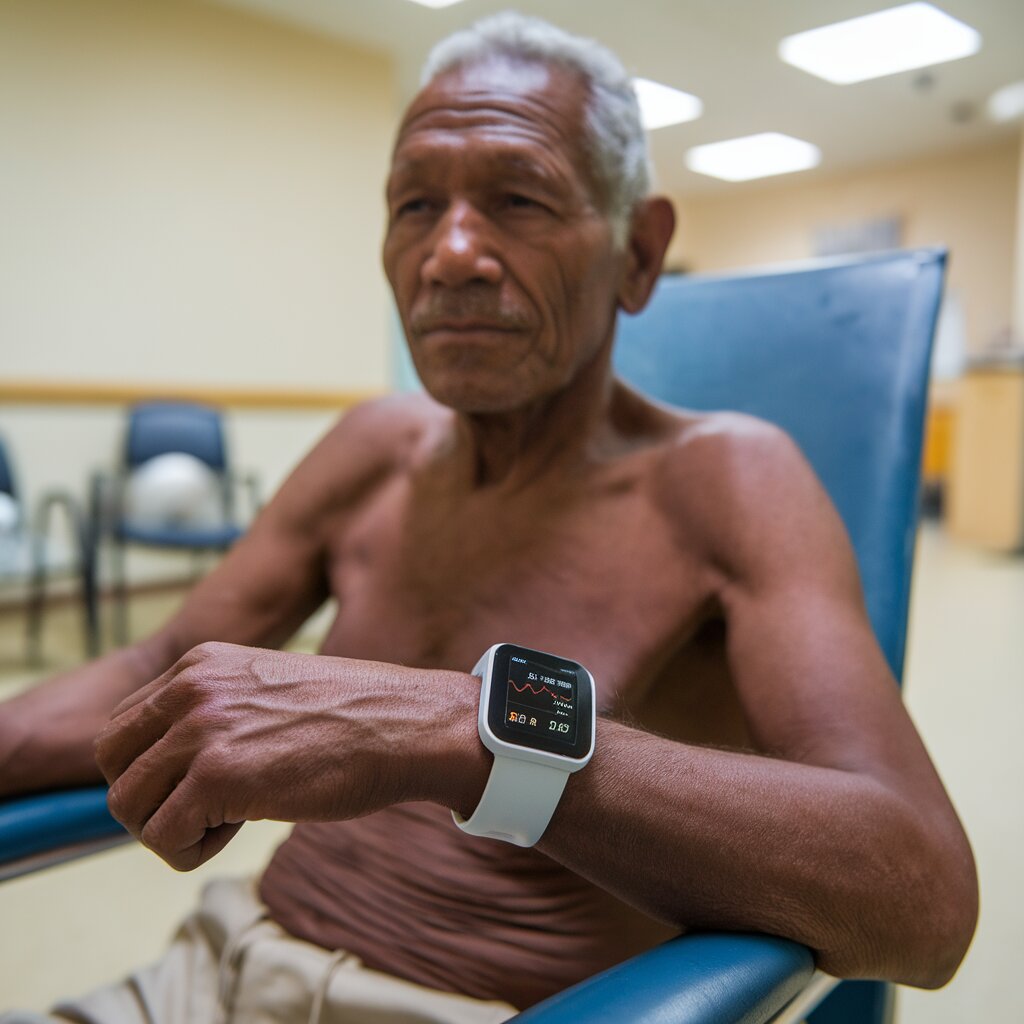In a recent breakthrough, wearable technology has shown significant potential in monitoring heart conditions such as atrial fibrillation, particularly among older Indigenous Australians living in remote areas. This heart condition, characterized by an irregular and often rapid heartbeat, is perilous if left untreated, increasing the risk of stroke and heart failure. However, its diagnosis can be particularly challenging due to the absence of noticeable symptoms in many individuals.
A study recently published highlights how wearable devices, like smartwatches, are increasingly integral in identifying and managing atrial fibrillation. This research is groundbreaking as it is the first of its kind to explore the application of wearables for heart health monitoring specifically within older Indigenous populations living remotely in Australia.
Though the study was relatively small, encompassing just 11 participants over five days, the impact was profound. In one instance, a participant named Aunty Mary used the wearable tech data to perceive her husband’s risk for atrial fibrillation, ultimately leading to life-saving medical intervention.
Indigenous communities face a significantly higher incidence and earlier onset of atrial fibrillation compared to non-Indigenous Australians, often resulting in severe outcomes. Indigenous individuals are thrice as likely to be diagnosed with the condition only after experiencing a stroke or heart attack. Therefore, early detection through wearable technology could mitigate these risks and improve health outcomes.
In preceding research involving Indigenous populations across rural, remote, and regional New South Wales, an overwhelming majority of older female participants expressed a keen interest in using wearables for tracking health and fitness. This enthusiasm aligns with broader findings indicating a strong receptivity among Indigenous communities toward adopting new technologies.
The recent study was conducted in partnership with an Aboriginal-controlled health service in remote New South Wales. The health program was co-designed with the community, illustrating the importance of culturally tailored health initiatives. Such collaborations ensure more effective and acceptable health interventions.
Participants ranged in age from 55 to 78 and were selected based on high blood pressure and additional risk factors for developing atrial fibrillation, excluding those already diagnosed with any irregular heartbeat conditions. Over five days, they wore chest patches to monitor heartbeats and blood pressure, along with smartwatches tracking heart rate and fitness metrics like steps taken.
During daily consultations, researchers analyzed the collected data with participants, discussing their experiences focusing on comfort, cultural safety, convenience, and any concerns. The study also incorporated traditional Indigenous research methods, such as yarning, to gather more nuanced and relevant data, highlighting participants’ viewpoints and stories.
Despite challenges such as inconsistent internet connectivity and extreme temperatures, participants responded positively to the program. They found the wearables comfortable, convenient, and culturally appropriate for monitoring heart health. Moreover, participants reported gaining significant confidence and knowledge about their health. This newfound awareness often extended to the broader community, particularly among older women, who play a crucial role in disseminating health information.
The case of Aunty Mary and her husband Lindsay underscores the program’s potential life-saving impact. Through the wearable tech, Mary encouraged Lindsay to seek medical testing, leading to a diagnosis of atrial fibrillation and subsequent urgent surgery.
Looking ahead, there is a strong consensus among participants on the importance of extending these programs to younger community members. The willingness to embrace technology for health monitoring indicates a promising avenue for widespread health improvements within Indigenous communities.
However, privacy concerns regarding data handled by tech companies were flagged by a few participants. This feedback has spurred efforts to develop a dedicated phone application and a research database, enhancing data autonomy and allowing participants greater control over their information sharing.
As the study included only a small sample size over a brief period, researchers are eager to expand this work. Future projects will include extended monitoring over 28 days and integrate personalized health data from wearables with online health education. This initiative aims to track heart activity, blood pressure, and exercise metrics comprehensively to foster improved health management among Indigenous Australians.
This pioneering research represents a crucial step towards leveraging technology to address significant health disparities, demonstrating the critical role of wearables in early detection and management of heart conditions in underserved populations.


